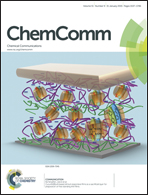Virtues and limitations of Pittsburgh green for ozone detection†
Abstract
A recently proposed 2′,7′-dichlorofluorescein (DCF)-derived fluorescent probe for the detection of ozone shows good selectivity against a number of reactive oxygen species and good pH stability for biological and environmental applications. It is found, however, that over oxidation of the fluorescent product (Pittsburgh green) can occur. This could render quantitative measurements inaccurate due to a reduction in fluorescence and overlapping fluorescence signals from over oxidation by-products and it requires careful experimental design. Although difficult to assess by fluorescence measurements, the over oxidation can be conveniently monitored by 1H NMR spectroscopy.


 Please wait while we load your content...
Please wait while we load your content...